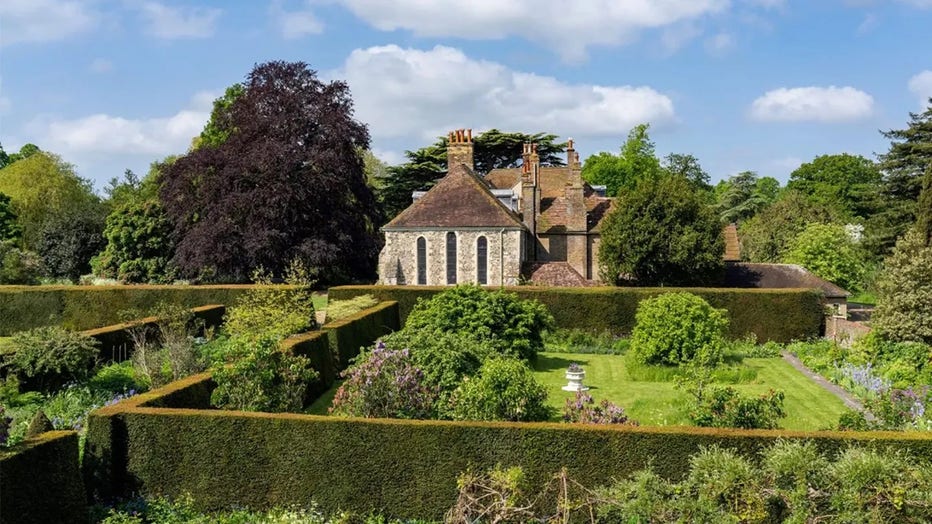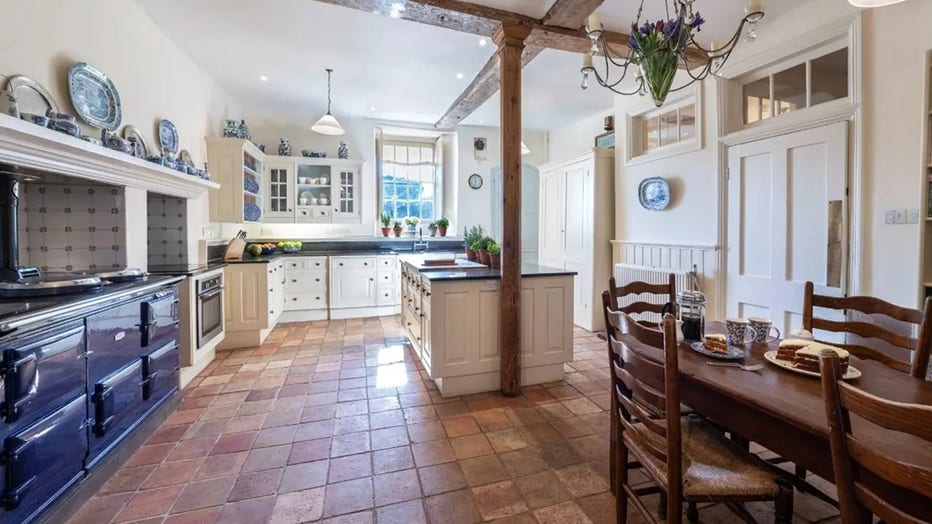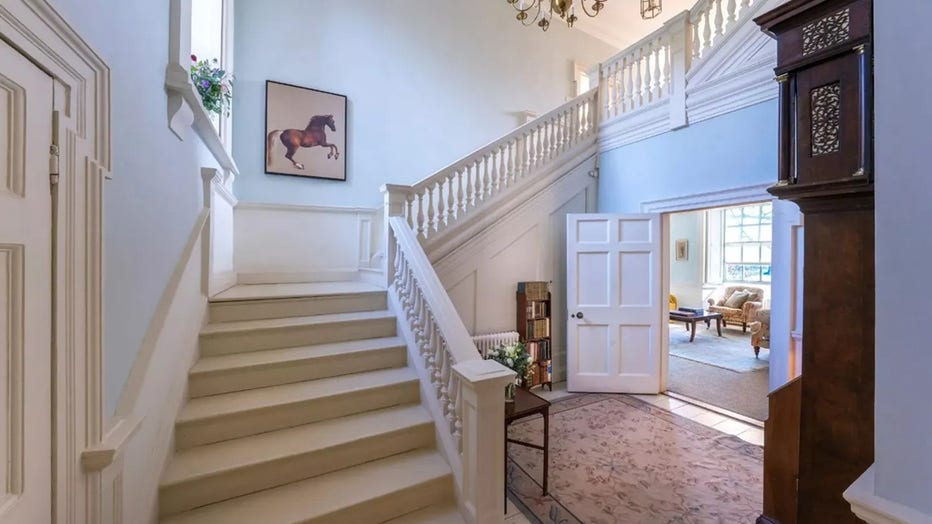A Rare Opportunity to Own a Medieval Property in England
[p data-v-7d0efd03=””>A 12th-century property in Kent offers a medieval house with a 13th-century chapel and a scenic moat. (Strutt & Parker)
A jaw-dropping medieval property is on the real estate market in England, offering a pastoral life to interested buyers – but there’s a catch.
The property, called St. John’s Jerusalem, was originally used by a group of warrior monks called the Knights Hospitallers. It’s located in the historic village of Sutton-at-Hone in Kent.
The house dates back to the 12th century, according to real estate agency Strutt & Parker. It functioned as a preceptory, or a local headquarters/monastery for the knights, who fought in the Crusades.
History of the Property
SINKHOLE IN HISTORIC CITY REVEALS MEDIEVAL HOSPITAL HIDING JUST BENEATH STREET LEVEL
The property has a rich history, with the earliest-recorded visit in 1214 by legendary medieval leaders, including King John and Henry III.
The Order’s lands in England, Sutton-at-Hone included, were confiscated and sold off by Henry VIII in 1540.
Features of the Property
“Dating from 1199 and set in moated gardens with a lodge cottage and former deer park, this historic house is privately set in a wonderful and very private and protected setting,” the listing reads.
The main house was remodeled in the Georgian era, still retaining some medieval charm. It boasts eight bedrooms, a high-ceilinged drawing room and a modernized kitchen.
The listing calls the main building a “wonderfully atmospheric home of exceptional quality,” featuring a 13th-century chapel at its east end.

The chapel at the east end remains one of the estate’s most striking features, along with its well-kept gardens. (Strutt & Parker)
The Lease and Future Plans
The catch? The property is not being sold outright — and plans call for it to be handed back to the National Trust in less than a century.
The lease ends on Sept. 29, 2122.
Edward Church, the real estate agent for the property, told Fox News Digital that listings like St. John’s Jerusalem are rare.
“These are among the most special houses as they are in the custodianship of this body that protects houses of national importance,” Church said.

The house’s modernized offers charming thick timber beams. (Strutt & Parker)
Walking in the Steps of Kings
The 24-acre property was also regularly frequented by legendary medieval leaders, including King John and Henry III.

The main house features Georgian refinements while still retaining some medieval aspects. (Strutt & Parker)
A Unique Opportunity
The whole package is being sold in the range of £3,250,000 – equal to over $4.4 million U.S. dollars.
The property also boasts a garden “like no other,” complemented by an idyllic moat of a chalk stream and English yews, per Strutt & Parker.
The current owners “have respected the history of the site (and the extensive archaeology beneath), including a garden of medicinal plants that complements the history of the Knights Hospitallers of St. John of Jerusalem, who established the original preceptory on the site,” the listing adds.
For more Lifestyle articles, visit foxnews.com/lifestyle
LINK: Get updates and more at foxnews.com.
Conclusion
The medieval property, St. John’s Jerusalem, is a rare opportunity for buyers to own a piece of history. With its 12th-century house, 13th-century chapel, and scenic moat, this property is a must-see for anyone interested in medieval architecture and history. Although the lease ends in less than a century, the property is still a unique chance to live in and care for a house of national importance.
Frequently Asked Questions
Q: What is the price of the property?
A: The whole package is being sold in the range of £3,250,000 – equal to over $4.4 million U.S. dollars.
Q: What is the lease period?
A: The lease ends on Sept. 29, 2122.
Q: Can the lease be extended?
A: Yes, it’s possible to extend the lease in the future.
Q: What is the history of the property?
A: The property was originally used by a group of warrior monks called the Knights Hospitallers and has a rich history, with the earliest-recorded visit in 1214 by legendary medieval leaders, including King John and Henry III.


